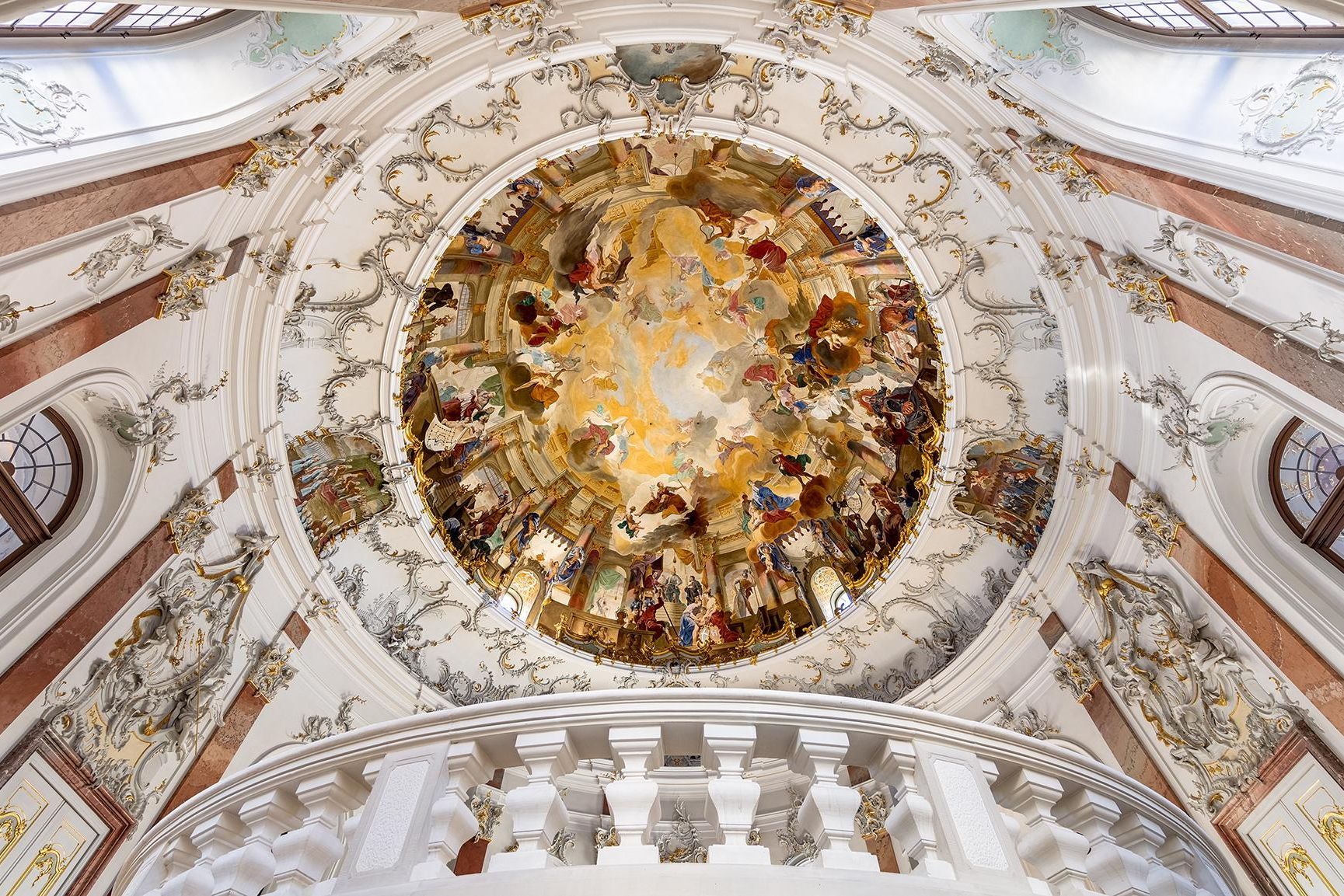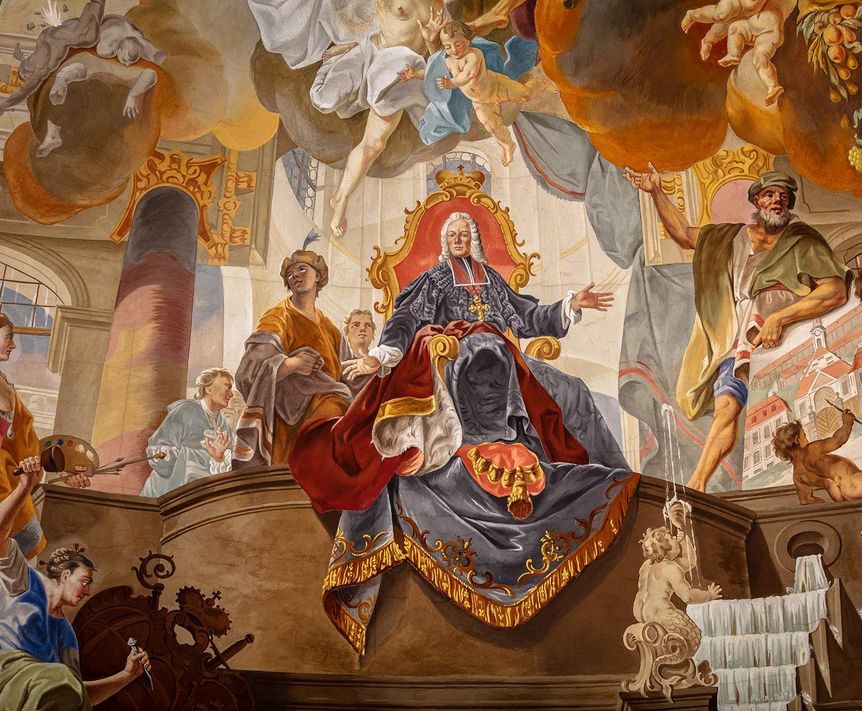Power and fame for all to seeThe ceiling fresco
He is enthroned above the door to the Marble Hall, stately and self-assured. Prince-Bishop Franz Christoph von Hutten, who ruled from 1743 to 1770, can be seen in the frescoes in the Domed Hall. He is surrounded by the buildings that he had built in Bruchsal. However, he also had his predecessor, the builder of the palace, included in the painting.







